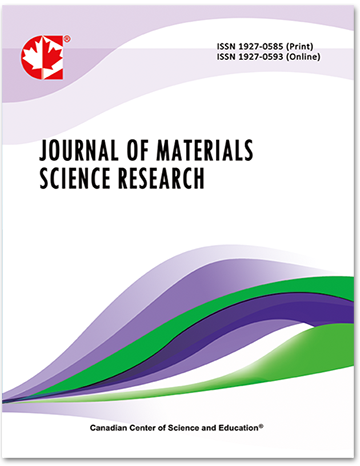Identification of Shear Modulus of Gelatin Blended with Carboxymethylcellulose Scaffolds Using Curve Fitting Method from Compressive Test
- Fasai Wiwatwongwana
- Yotthana Khunathon
- Wetchayan Rangsri
- Nattawit Promma
- Somchai Pattana
Abstract
Biopolymer scaffolds which made from various ratios of gelatin blended with carboxymethylcellulose (CMC) were studied. The scaffolds were fabricated to porous structure via freeze drying process and crosslinked to induce conjugation of free amide and carboxyl groups in protein structures by using thermal crosslinking techniques. The mechanical properties of the scaffolds were characterized by experimental procedure. In order to evaluate the modeling, we described the stress-strain behavior of the scaffolds by fitting the data to a neo-Hookean model. Results shown that models which evaluated CMC blended gelatin scaffold in the ratio of 80 and 20 of gelatin and CMC occurred in the highest average in shear modulus which was 10.30 kPa compared to other blended scaffolds. Gelatin scaffold with 10, 30 and 40% of CMC showed dramatically decreased in the shear modulus which were 2.12, 1.73 and 0.85 kPa, respectively compared to pure gelatin scaffold with significant different. These results showed the possibility of using CMC as a low cost material to combine with biopolymers for using in tissue engineering applications.- Full Text:
 PDF
PDF
- DOI:10.5539/jmsr.v1n4p106
Journal Metrics
Impact Factor 2022 (by WJCI): 0.583
Google-based Impact Factor (2021): 0.52
h-index (December 2021): 22
i10-index (December 2021): 74
h5-index (December 2021): N/A
h5-median (December 2021): N/A
Index
- CAS (American Chemical Society)
- CNKI Scholar
- Elektronische Zeitschriftenbibliothek (EZB)
- EuroPub Database
- Excellence in Research for Australia (ERA)
- Google Scholar
- Infotrieve
- JournalTOCs
- LOCKSS
- NewJour
- PKP Open Archives Harvester
- Qualis/CAPES
- SHERPA/RoMEO
- Standard Periodical Directory
- Universe Digital Library
- WJCI Report
- WorldCat
Contact
- John MartinEditorial Assistant
- jmsr@ccsenet.org
